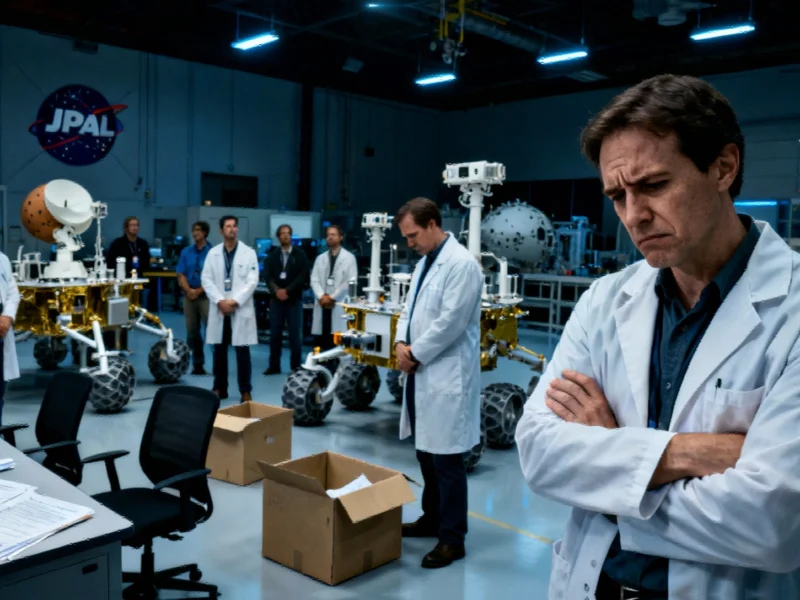Funding Impasse Triggers Widespread Federal Shutdown
The federal government entered a shutdown early Thursday morning after the Senate rejected a Republican-backed continuing resolution for the eleventh time, marking one of the most prolonged legislative standoffs in recent history. The 55-45 vote fell short of the 60-vote threshold needed to advance the measure, with only three Democratic caucus members crossing party lines. This legislative failure comes despite the House having narrowly passed the GOP proposal 217-212 earlier this week.
Administration Priorities Amidst the Shutdown
While hundreds of thousands of federal employees face furloughs, the Trump administration has maintained funding for certain priority projects, including White House ballroom construction, according to administration officials who claim these initiatives don’t rely on congressional appropriations. Internal documents reviewed by news outlets indicate that offices handling tariff collection and immigration enforcement will maintain higher staffing levels than during previous shutdowns.
Vice President JD Vance defended the administration’s approach, telling reporters, “We’re not targeting federal agencies based on politics.” However, House Speaker Mike Johnson offered a contrasting perspective, suggesting the prolonged shutdown could “benefit” Republicans by enabling deeper cuts to the federal workforce. This divergence in messaging reflects the complex political calculations underlying the shutdown strategy.
Economic and Public Health Consequences
The Congressional Budget Office estimates approximately 750,000 workers could be furloughed daily, with compensation losses totaling $400 million. Critical agencies face severe staffing reductions, including the Environmental Protection Agency (89% furlough rate), Education Department (87%), and Commerce Department (81%). The suspension of key economic data collection means Americans won’t receive timely information about employment trends and inflation, potentially affecting both market confidence and individual financial decisions.
Public health monitoring continues for now, but routine FDA and EPA inspections face curtailment, raising concerns about food and environmental safety. The situation echoes challenges seen during previous government closures, where essential personnel eventually stopped reporting to work after extended periods without pay. These operational disruptions represent just one aspect of the broader impact on federal services.
Healthcare Debate at the Center of Dispute
The core disagreement preventing resolution involves Democrats’ insistence on extending Affordable Care Act tax credits set to expire at year’s end. Republicans have characterized this demand as an attempt to provide healthcare to undocumented immigrants, though current law generally prohibits noncitizens from accessing federally funded health programs. The debate has taken increasingly personal tones, with President Trump sharing altered videos of Democratic leaders and making unsubstantiated claims about Democratic intentions regarding gender-affirming care.
As this political theater unfolds, the federal government shutdown begins after Senate rejection of stopgap measures, creating uncertainty across multiple sectors. The situation demonstrates how technological tools are increasingly influencing political discourse, much like how advanced research technologies are transforming information gathering in other fields.
Essential Services and Exemptions
While the shutdown affects numerous government functions, several critical programs continue operating:
- Social Security, Medicare, and Medicaid benefits
- Veterans’ disability and pension payments
- Active military operations and essential personnel
- Food assistance programs (subject to funding availability)
- Passport and visa processing
- Postal Service operations
National parks remain accessible but with minimal staffing, while the Smithsonian museums and National Zoo will operate through at least October 6 using prior-year funding. The IRS will maintain normal operations for the shutdown’s first five days using Inflation Reduction Act allocations.
Political Posturing and Blame Game
Both parties have intensified their rhetoric as the shutdown continues. Senate Minority Leader Chuck Schumer declared the situation a “Republican shutdown,” while Speaker Johnson’s social media posts blamed Democrats for cutting nutrition programs and veteran services. The White House website now features a shutdown clock accusing Democrats of causing the closure.
This political stalemate occurs amid broader industry developments in governance and transparency measures. The administration’s direction to agencies to prepare for potential mass layoffs of employees in non-priority programs has raised concerns about the potential for permanent reductions masked as shutdown consequences.
Broader Implications and International Context
The shutdown’s effects extend beyond domestic concerns, potentially affecting America’s standing in global affairs. As the U.S. grapples with internal governance challenges, international bodies are addressing their own regulatory frameworks. The Vatican’s call for binding AI governance highlights how institutions worldwide are confronting technological evolution alongside traditional governance questions.
Meanwhile, security concerns persist both domestically and abroad. Recent sophisticated cyber espionage campaigns targeting European infrastructure underscore the complex security landscape that exists independent of political funding battles in Washington.
Path Forward Uncertain
With neither side showing signs of capitulation, the shutdown’s duration remains unpredictable. Political analysts note that while Democrats may gain leverage from the situation, shutdowns traditionally damage all involved parties’ public standing. The impasse reflects deeper ideological divisions regarding government’s proper scope and role, particularly concerning healthcare access and immigration enforcement.
As federal workers face uncertainty and essential services operate at reduced capacity, the resolution may depend on which party blinks first under political pressure. The situation continues to evolve amid competing claims and related innovations in how organizations manage operational disruptions. What remains clear is that the human and economic costs will accumulate the longer the standoff continues.
This article aggregates information from publicly available sources. All trademarks and copyrights belong to their respective owners.
Note: Featured image is for illustrative purposes only and does not represent any specific product, service, or entity mentioned in this article.



